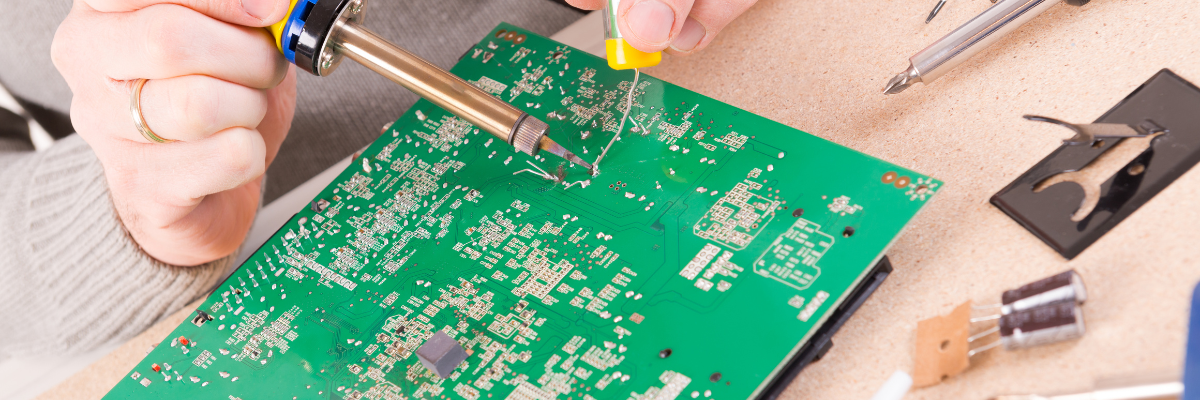Maximizing Efficiency: Innovative Cost-Effective Strategies for PCB Making

Maximizing Efficiency: Innovative Cost-Effective Strategies for PCB Making
Designing and manufacturing PCBs cost-effectively is one of the crucial aspects of the electronics manufacturing industry. Since these components are vital elements in various electronic devices, finding cost-effective methods to produce them is an ongoing challenge for many of today’s manufacturers. However, by implementing strategic approaches and leveraging the latest technologies, manufacturers can optimize their PCB production processes and reduce costs without compromising on quality. Would you like to know how these critical units of electronics products can be manufactured cost-effectively? If that sounds yes, you must read this post that explores the strategies involved in cost-effective PCB making and how they can benefit the industry as a whole.
Top Strategies that Contribute to Cost-Effective PCBs
Implementing the following techniques help reduce expenses without sacrificing the quality of your boards.
-
Choose the Right Materials: When it comes to the PCB making, having the right materials is crucial to achieve both quality and cost-effectiveness. While there are expensive, specialized materials available for certain applications, it is important to assess whether they are necessary or if more affordable options can be utilized. Overall, it is important to balance quality with cost when selecting materials for the making of boards.
-
Efficient Component Placement: Proper component placement plays yet another significant role in reducing manufacturing costs. By organizing components logically and efficiently, manufacturers can minimize the length of traces and reduce the overall size of the PCB. This in turn can impart savings in both material and manufacturing costs.
-
opt for SMT: Surface mount technology has become the standard for today’s PCB manufacturing due to its cost-effectiveness. Compared to through-hole components, SMT components are smaller, lighter, and less expensive. With the utilization of SMT, manufacturers can save on material costs, while also increasing manufacturing efficiency.
-
Design for Manufacturability (DFM): DFM involves making PCBs in a way that simplifies the overall manufacturing process. By carefully taking into account the manufacturing constraints from the initial design phase, like reducing complex routing, and minimizing the number of layers or components, PCB manufacturers can minimize production costs significantly.
-
Optimize Design: Optimizing the PCB design is the other most effective way to reduce costs. Manufacturers can consider minimizing the number of layers, reducing the size of the PCB, and simplifying the circuit layout after carefully analyzing the project requirements. Spending time on accessing these factors initially will lead to an optimized design, which in turn will minimize material waste and reduce manufacturing complexity, resulting in significant cost savings.
-
Manufacturability Validation: Before actually starting mass-producing PCBs, it is highly recommended to validate the PCB design for manufacturability. This process can involve reviewing the design for any potential manufacturability issues or errors that could lead to costly rework in the future. Detecting and rectifying issues early in the process will save both time and money.
-
Panelization: Panelization generally involves grouping multiple PCB designs onto a single large panel. Manufacturers can reduce setup costs and increase production efficiency by maximizing the usable area of the manufacturing equipment. This panelizing technique can save on tooling expenses and improve overall yield.
-
Manufacturing Process Optimization: Continuously improving and optimizing the PCB manufacturing process can undoubtedly lead to significant cost savings. Examining production data, recognizing bottlenecks, and applying efficiency-enhancing measures can enhance yield and minimize overall manufacturing costs.
-
Component Consolidation: Manufacturers can consider reducing the number of unique components in PCB designs, unless they are crucial for the project, to minimize procurement costs. Standardizing components and using common parts across multiple designs can significantly decrease costs, along with streamlining inventory management.
-
Quality Control: Employing robust quality control measures throughout the manufacturing process is essential to avoid costly mistakes or rework. Conducting detailed inspections, using automated testing equipment, and applying process controls will guarantee that PCBs meet necessary standards while preventing unforeseen expenses.
Many of today’s leading PCB manufacturers, including Twisted Traces, implement these techniques to create cost-effective PCBs, while without compromising high-quality standards. Implementing such strategies demands a comprehensive approach that involves healthy collaboration, continuous improvement, and careful consideration of various factors at each stage of the manufacturing process. Twisted Traces, being a prominent player in the marketplace has streamlined processes in place, which help them create PCBs not just cost-effectively but with meeting the required quality standards.

